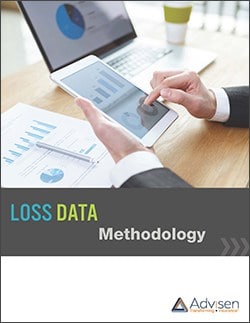 All loss data is not equal. The P&C community has access to a myriad of loss databases that range in scope, assembly, accuracy, granularity, etc. Since inception, we have invested more than 250 person-years to build our loss database of more than 800,000 legal cases, actions, and events that have resulted in, or might result in, significant financial losses, equating to more than $9 trillion in losses. So how do we do it?
All loss data is not equal. The P&C community has access to a myriad of loss databases that range in scope, assembly, accuracy, granularity, etc. Since inception, we have invested more than 250 person-years to build our loss database of more than 800,000 legal cases, actions, and events that have resulted in, or might result in, significant financial losses, equating to more than $9 trillion in losses. So how do we do it?
Advisen Loss Data Methodology Report
The Loss Data Methodology report is a free, 11-page paper that explains our process of capturing, collecting, and curating our proprietary relational database of losses.
Loss Data Methodology Report Topics
This Loss Data Methodology report addresses the following questions:
- How does Advisen collect so much loss event data?
- What’s included in Advisen’s loss data?
- How can our data be used?
- Where is our data sourced from?
- How does Advisen keep this material current & up-to-date?
- What steps are in place to minimize entry duplication?
- What QC protocols does Advisen use to maximize accuracy?
- How many resources support this database?
Analytic Applications Using Advisen Loss Data
The utility of Advisen’s loss database is proven when powering predictive models and custom analytics designed to assess potential loss values. Our loss database also provides a deep archive of loss history by which to compare an insurance company’s loss experience or show a corporate board of directors what types of losses have stymied peer companies. Given the structured database format, applications designed to showcase loss susceptibility and limit adequacy or simply demonstrate pain points and fear factors are frequent applications, too.
Our loss database, combined with information from more than 20 million corporate litigations, forms Advisen’s Loss Insight.
